Yamaha Journey Vol.23
This is the story about Helen Lloyd's motorcycle travel on a Yamaha XT225 across Africa.
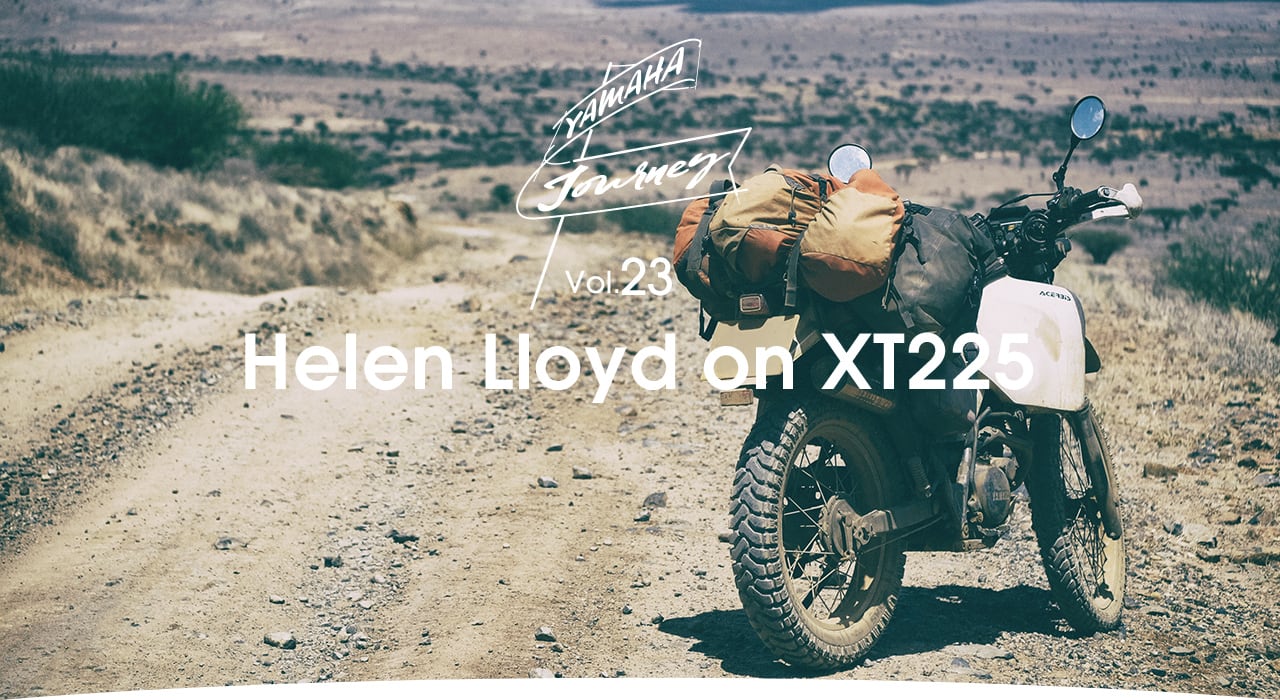
AFRICA TAKE 2 - A RIDE ON THE WILD SIDE
Helen Lloyd
XT225
#03 OTHERWORLDLY AFRICA
- HIGHS AND LOWS ON THE RIDE NORTH
Kenya - Ethiopia - Sudan - Egypt
In 2009 Helen Lloyd quit her job in the UK and cycled across Africa. In 2015, returning 6 years later, she travelled across the continent for a second time, but this time on a Yamaha XT225. During the 15-month, 40,000-kilometer ride from Cape Town to Alexandria, Helen explored the stunning landscape and encountered the kindhearted people and unique wildlife that share it. In this final installment of her exciting journey, she sets off from Kenya riding through beautiful but perilous terrain before triumphantly reaching her final destination at the foot of the Mediterranean.
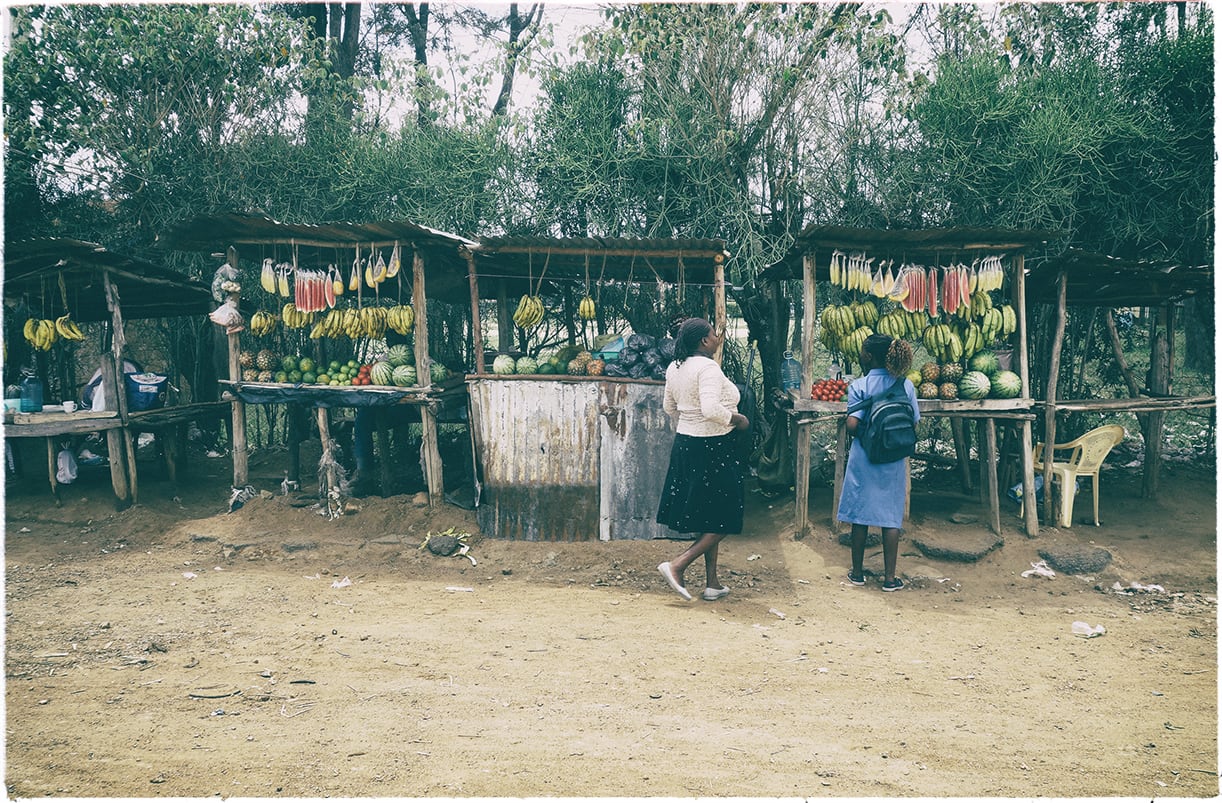
I’d come to Machakos because my mum spent one year teaching here in the early 70s. Now it is a noisy, busy town with high rise buildings, but out towards the school I spotted these stalls and imagined my mum buying fruit from them because some things have not changed.
Machakos, Kenya
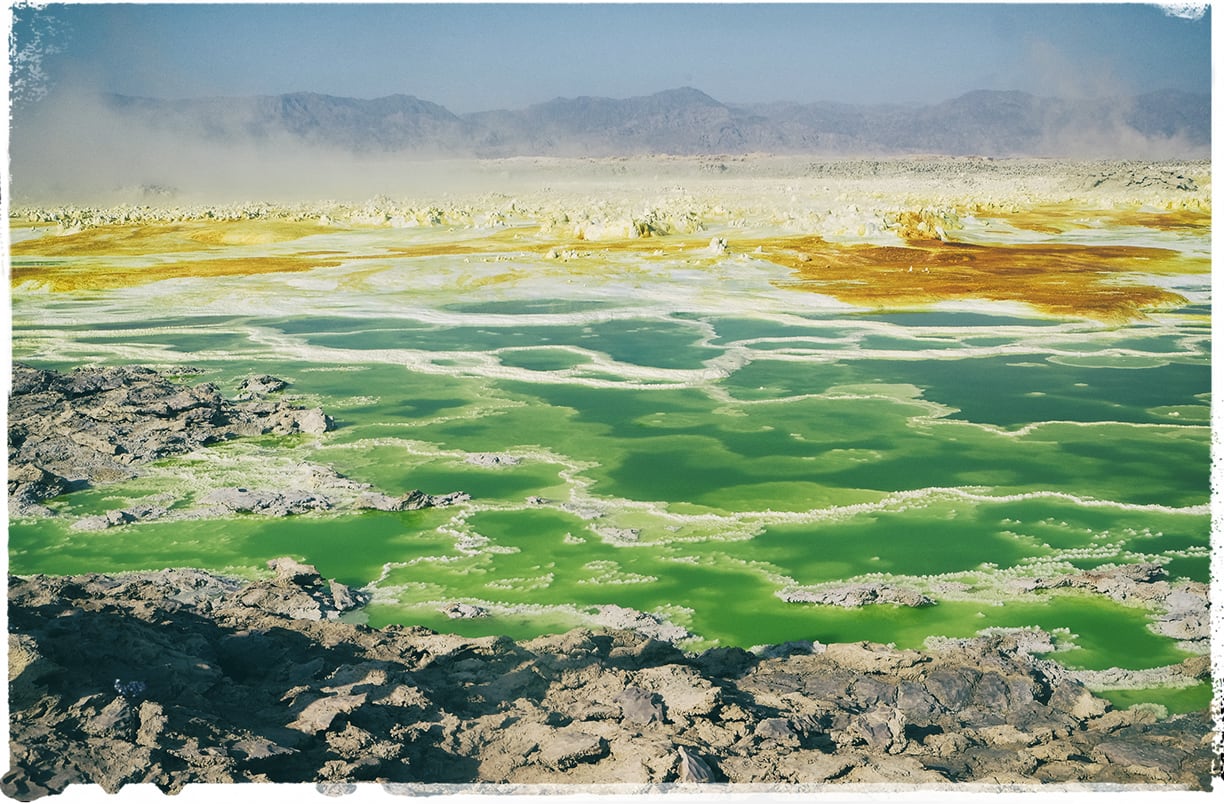
The bubbling acid green pools among the plains of iron oxide, sulphur and salt were unlike anything I had seen before. At 130m below sea level in one of the hottest places on earth, it was hard to believe that nature could produce such beautiful bright colors and an obnoxious stench at the same time.
Dallol, Danakil Depression, Ethiopia
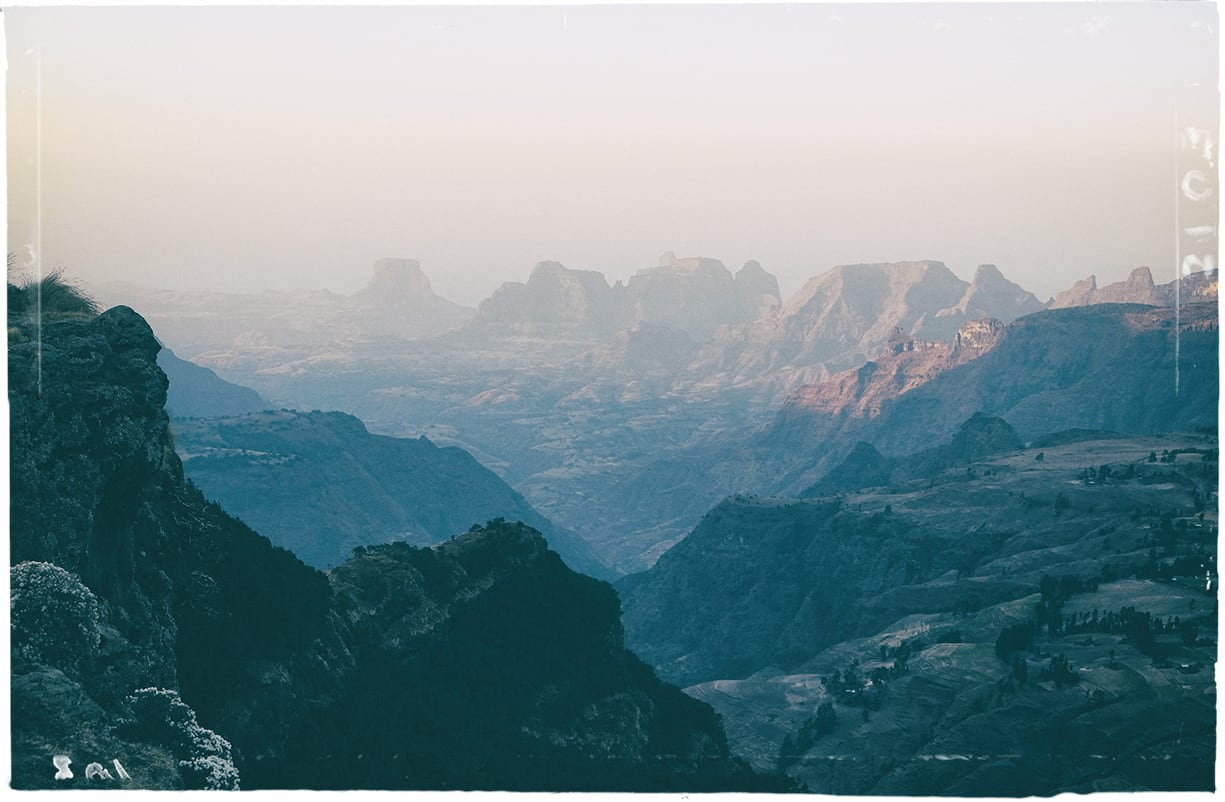
We'd been in amongst people and got a lot of attention from the local children for the last few weeks, so it was a noticeable change to leave civilization to head up into the mountains surrounded by stunning landscapes and feel peace as we looked out to the distant horizon.
Simien Mountains, Ethiopia

I love the desert, the silence, the beauty, the emptiness and after a long day’s ride in the heat, there’s nothing I enjoy more than watching the sun set in the cool of evening.
Bayuda Desert, Sudan

Kenya - The Rules of the Road
Before setting off north from Nairobi, we decided to make a detour to the island of Lamu just off the coast. Throughout the journey, we had tended to avoid main roads, preferring the dirt tracks. The route to Mombasa on the coast from Nairobi, however, is a major artery. There is only one rule of the road: size matters. The XT225 was like a mosquito compared to the elephantine trucks transporting goods inland from the coastal port of Mombasa. We dodged our way in and out of the hard shoulder where it existed and off the road when it didn’t in order to avoid oncoming, overtaking traffic headed straight for us.
For the return, we took a quiet, more northerly route riding alongside the tarmac which was littered with potholes big enough to swallow a bike. There wasn’t much to encounter beside the bush; just a few camels, and sometimes women collecting rainwater before it evaporated from puddles on the road.
Back in Nairobi we had to visit the Immigration offices to get our passports stamped, since there was no official border crossing on our planned route along the shores of Lake Turkana.
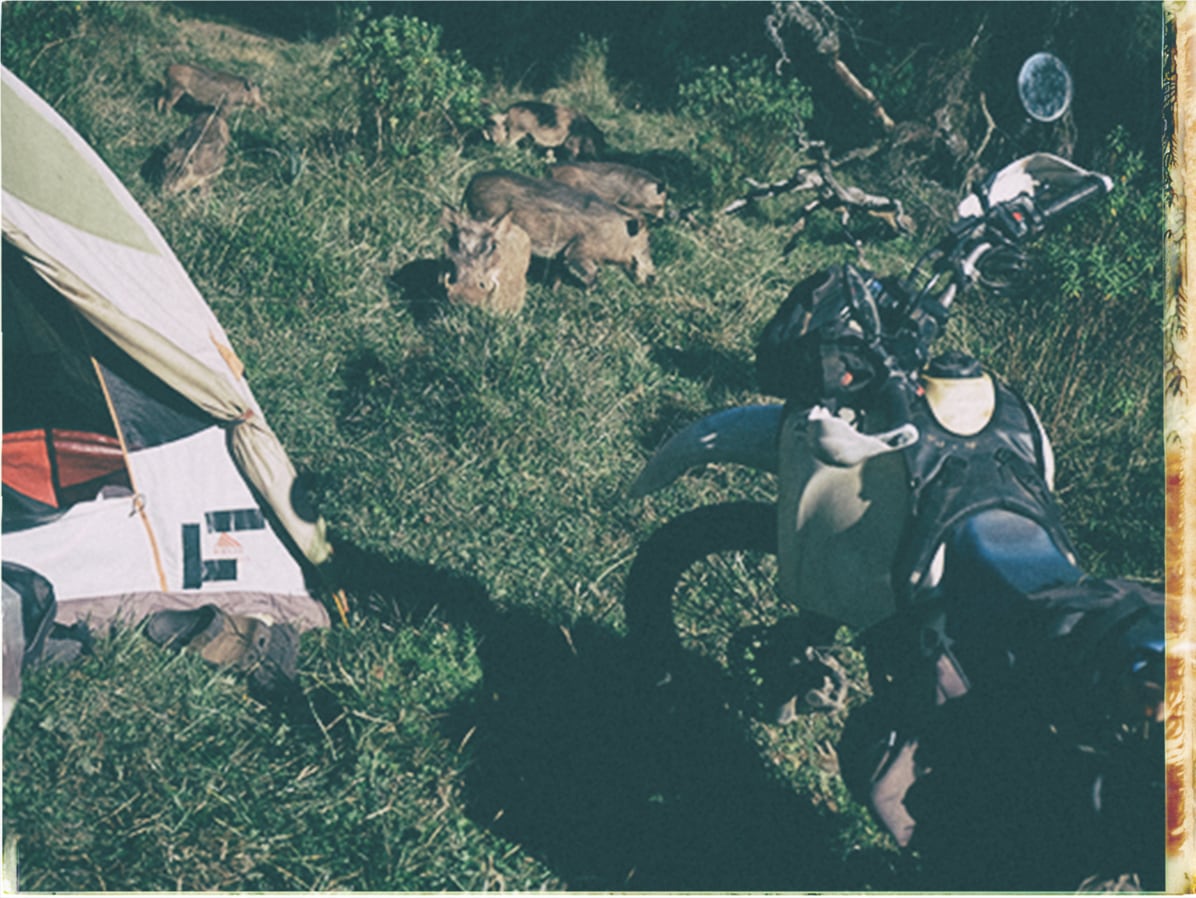
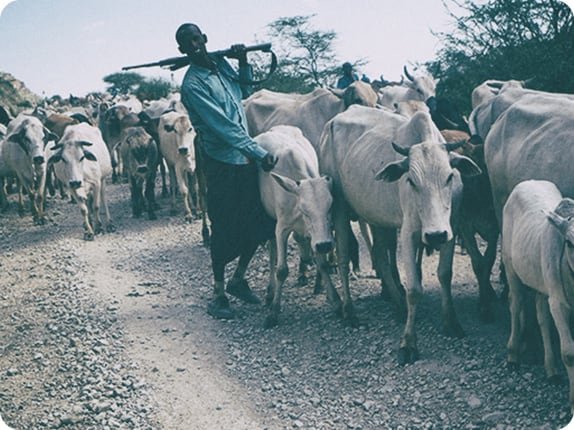

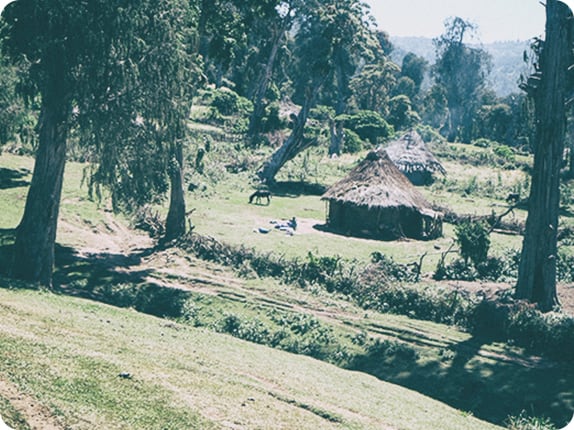
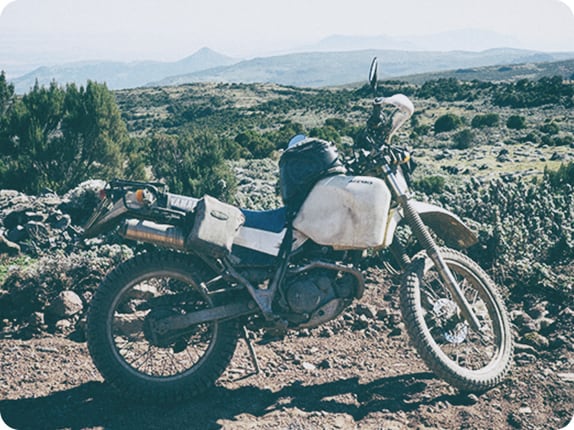
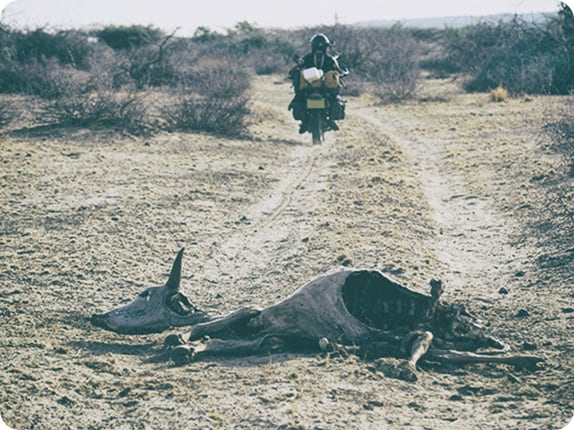
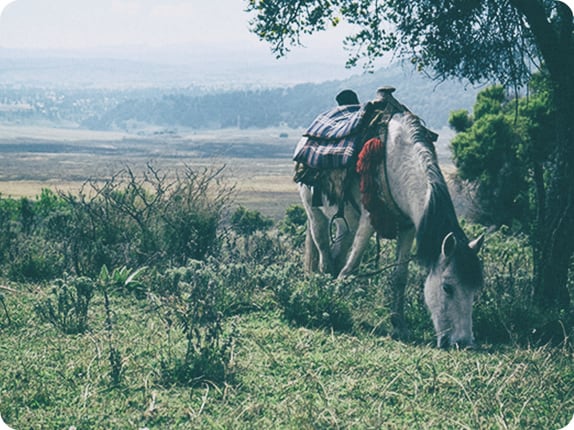



Lake Turkana - A Jade Sea in The Unrelenting Desert
As we travelled north, the climate changed from the lush, temperate highlands to the hot, arid barren lands of the Samburu. I watched a column of rain march slowly and steadily across the flat plain, knowing that the ground would not be revived by a minute’s downpour. Indeed, now in the dry season, water was at a premium, the riverbeds dry. Here, settlements were few and far between, more commonly seen were the small dome huts of bent branches, once plastered with dried earth, now more usually covered in yellow plastic or the remains of UN-donated tarpaulins. Occasionally we passed by herds of camels.
Eventually, Lake Turkana, once called the Jade Sea, came into view, it’s deep turquoise color such a contrast to the bland beiges of the land. Here the wind ripped through. It’s no surprise that there are massive wind turbines being constructed to harness this power on a national scale.
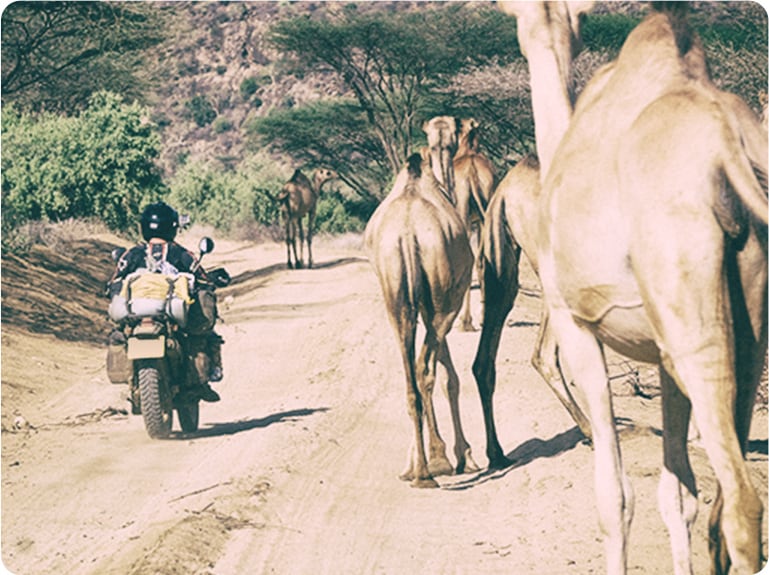

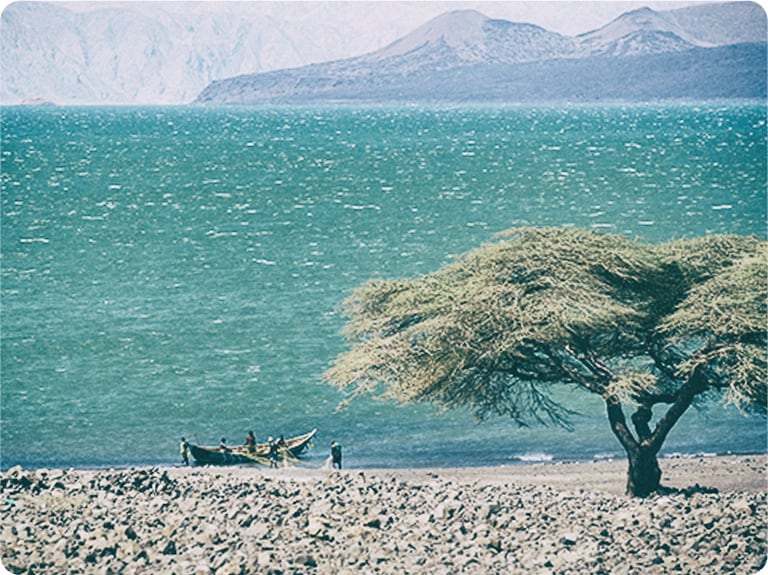
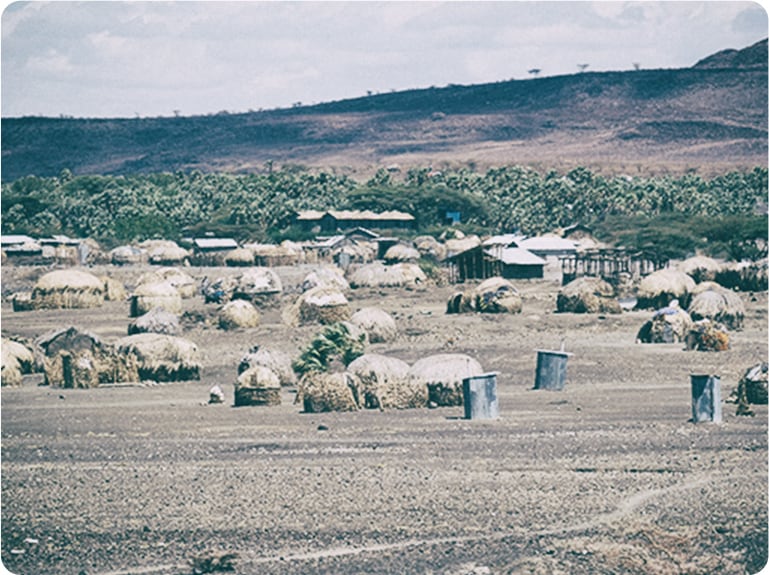
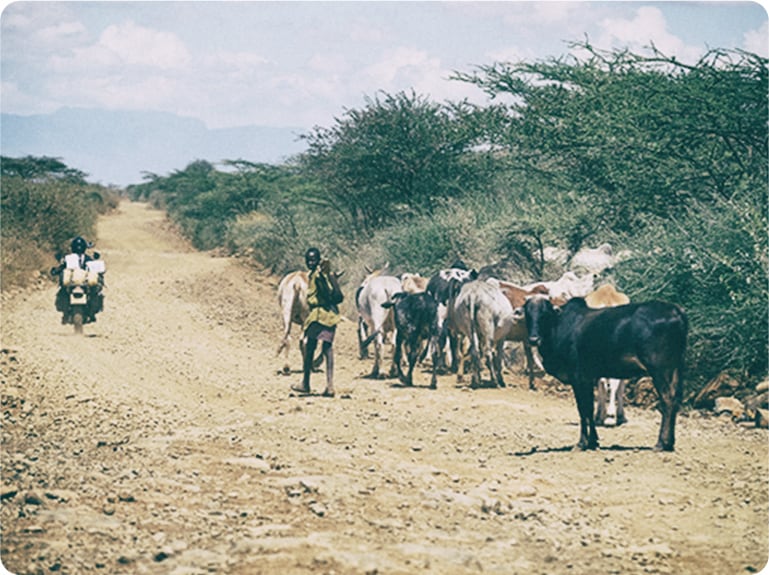
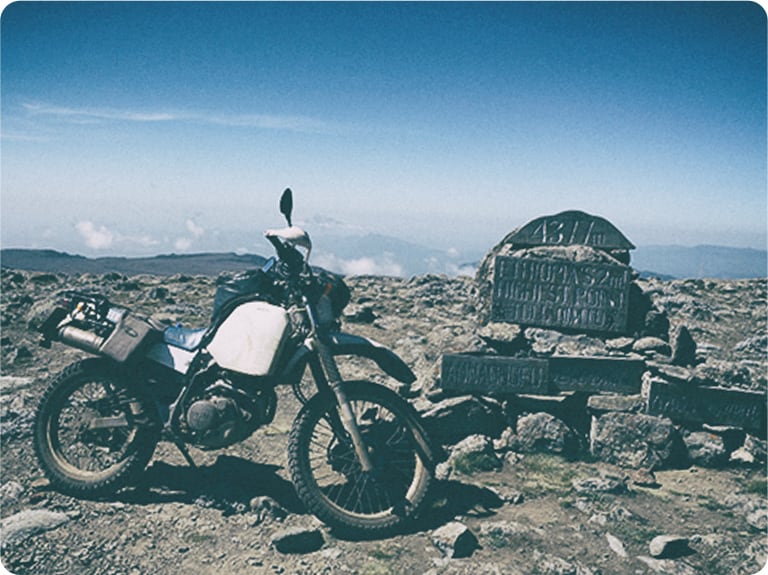
The rocky trail along the shore eventually led us to the main town of Loiangalani, a conglomeration of domed huts, a few more solid structures and a radio mast. Having resupplied with fuel and clean water, we continued north. The black rock was replaced by sandy tracks through Sibiloi National Park. We saw little wildlife which was an indicator of the inhospitable climate. We did see goats grazing on the minimal scrub. A lone boy watching over the flock raced off in fear the moment he saw our approach, fearing authority would not react kindly to the illegal grazing.
Beyond, we passed through the last Kenyan village, across the unmarked border and into Ethiopia. This was one of the most trying roads I travelled. Not because of the tough tracks, but because of the obvious struggle local people have simply to survive in this harsh environment.
With the UNESCO-protected rock-hewn churches of Lalibela, the stelae of Axum and the castles in Gondar, Ethiopia is rich in history and has a unique culture. That’s to say nothing of the varied and beautiful landscapes, from Omo Valley, the Bale Mountains where we went trekking and the Sanetti plataeau where we were lucky to see the Ethiopian wolf, to the Simien mountains in the north where we rode with an armed guard.

Danakil Depression - Salt Flats, Sulphur Pools and a Volcano
One region, in particular, intrigued me - the Danakil Depression. At around 100m below sea level, it is one of the lowest places on earth. It is also one of the hottest. That is what made it so appealing. Two years earlier I had been cycling through Siberia, one of the coldest places on earth. People live in both of these inhospitable places, and I wanted to see how. Due to political and security reasons, we had to join a tour into Danakil, so for 4 days we were ‘escorted’ by ten 4x4s and had the luxury of riding without all our kit, which was transported for us.
We descended from the highland plateau, until the airflow from being on the move no longer provided any relief. It was like having a hairdryer blowing hot air into my face. It was then that I began to wonder if travelling here by motorbike wasn’t such a good idea. Momentarily I was envious of everyone else in the air-conditioned 4x4s. But then I remembered that this was one of the great things about motorcycle travel - you are exposed and vulnerable to climate and terrain in a way that is impossible to experience from the confines of a bigger vehicle.
We rode across the salt flats glistening white in the sun and wandered by the hot springs that bubble like a cauldron, fumes rising from the bright green, yellow, and orange toxic sulphur pools.
At night we slept under the stars on thin mattresses placed on rickety wooden frames and enjoyed the cool hours of darkness before the sun rose on another day. To reach the Erta Ale volcano, it was a hard ride through powdery dirt and sand that kicked up a cloud making it impossible to ride near the other vehicles.
The 4x4s made light work of the terrain and we struggled to keep pace on the bikes. After a couple of hours non-stop riding, we reached the edge of the rocky ascent. Here the bikes were in their element and we rode on ahead and waited, thankful for the chance to take a break and rest.
After a full day’s ride, we pulled into the camp just as the sun was setting. But that wasn’t the end of the day. After dinner, we began the three-hour walk up Erta Ale. This was a much less appealing prospect after a hard day’s ride than for those who’d been confined to the leisurely (but arguably boring) back seat of a 4x4.
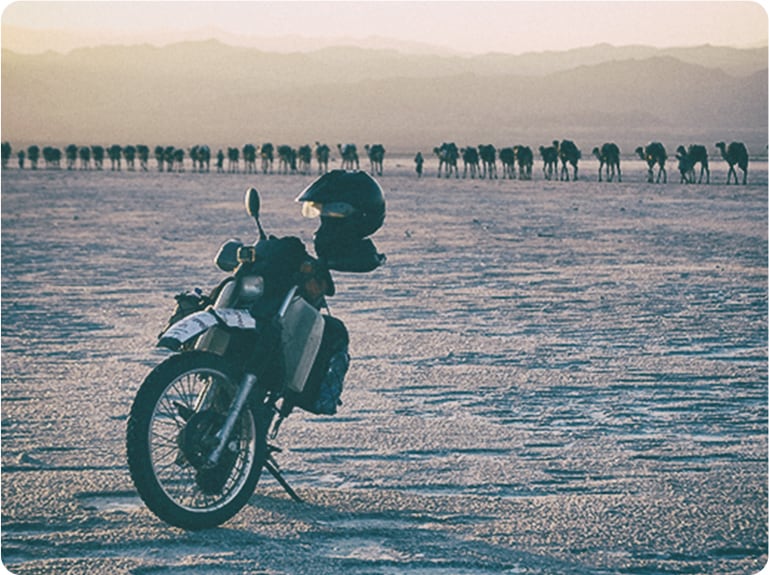
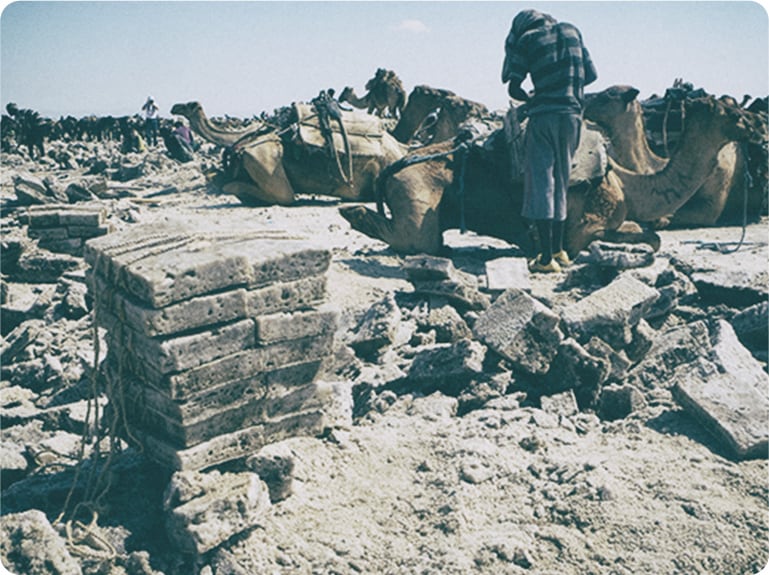
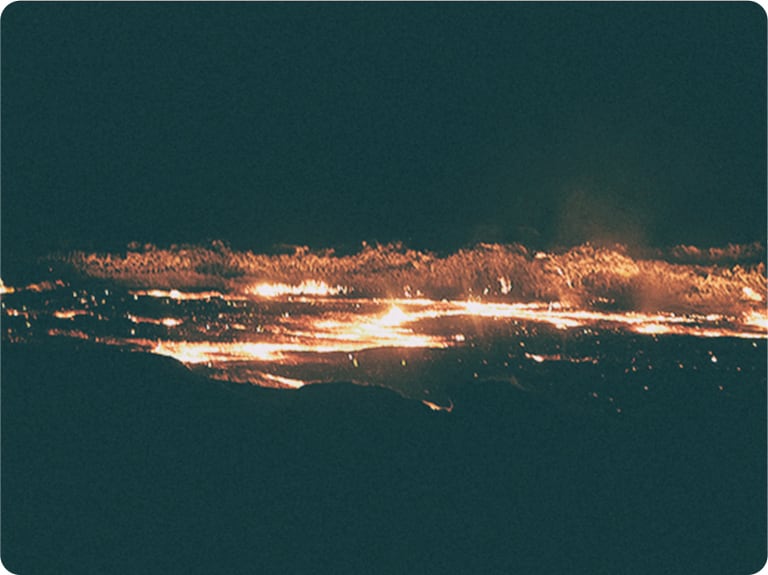
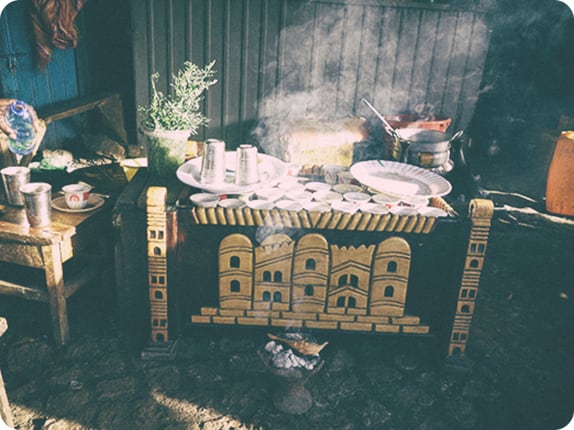
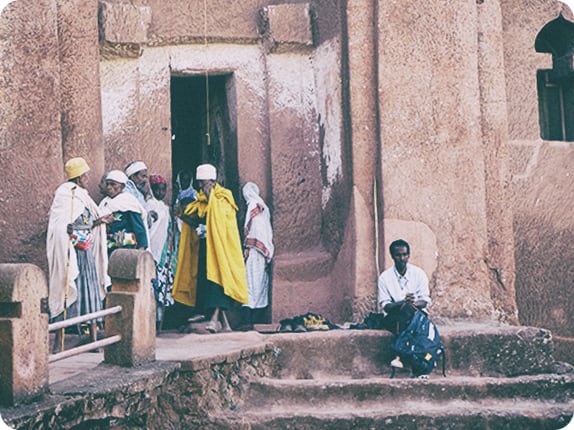


It was nearing midnight by the time we took the last careful steps over the solidified lava crust to peer into the volcano's core. Fiery molten lava bubbled in this cauldron with pockets erupting in bursts of orange, making me think that there was no reason why it couldn’t fall on us.
We retreated to a safe camp and rolled out our mattresses for a few hours of sleep under the stars before making the descent in the relative cool hours before sunrise. After breakfast we made the return journey to the closest town.
By now I was physically exhausted. This made riding through the sandy terrain even more challenging. Imagine the relief when we returned to the road. Except the day’s adventure hadn’t finished yet because one of the bike’s engines cut out and refused to start. The 4x4s had to return for people to catch flights, so we made our own way back.
The cause of the problem was contaminated fuel. Once in town, with the tank emptied, the carburetor cleaned, the washed out spark plug replaced and clean fuel obtained, the bike started like new. My body, on the other hand, took a few more days to recover.

North Africa - Wild Camping in the Sands of Time
After the trials of Ethiopian travel, Sudan came as a welcome respite. Following the tarmac road to Khartoum and on to the Egyptian border was easy, relaxed riding on quiet roads. When late afternoon arrived, we’d pull off the road and ride a short distance into the desert to camp. The Sudanese deserts are the epitome of wild camping locations for me.
As long as you’ve restocked food and water supplies, and collected enough wood scavenged from the roadside during the day for a fire to cook on (our stove had broken), you don’t need anything else. It’s clean and dry, and temperate once the sun starts to set.
The unbroken views to the horizon of natural landscape give a wonderful sense of the wilderness that is not easily found in East Africa, where villages and towns seem to merge into one. Watching the myriad stars light up the dark expanse, it’s impossible not to marvel at the enormity of and beauty of this world and how insignificant each of us really are.
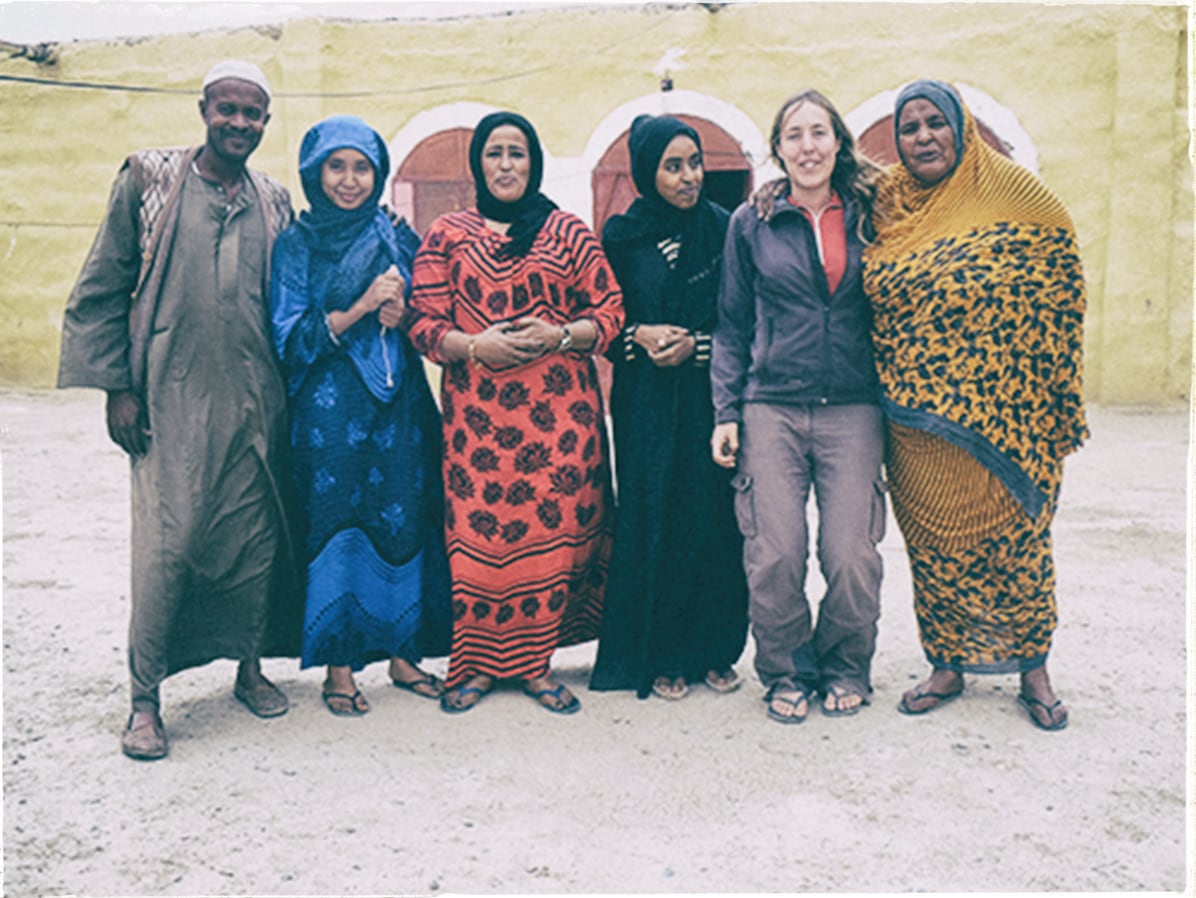
While Egypt is famous for the Great Pyramids of Giza and Valley of the Kings near Luxor, the most well-known of the multitude of monuments and tombs from ancient African civilizations, Sudan also has a wealth of less famous Nubian remains. We’d depart from the main road and take dusty tracks towards a GPS location, where we’d find archeological remains seemingly abandoned in the desert. Each had a guardian caretaker who was only too pleased to take our entry fee.
Sadly though, it’s only possible to get a two-week transit visa for Sudan, and so the wonders of the desert were short-lived. The same peace was not to be found in Egypt, where we found ourselves under police escort for several days along the road running parallel to the Nile.
Eventually, fifteen months and 40,000 kilometers after leaving Cape Town at the other end of the continent, we arrived in Alexandria and set eyes upon the Mediterranean, marking the end of another African adventure.
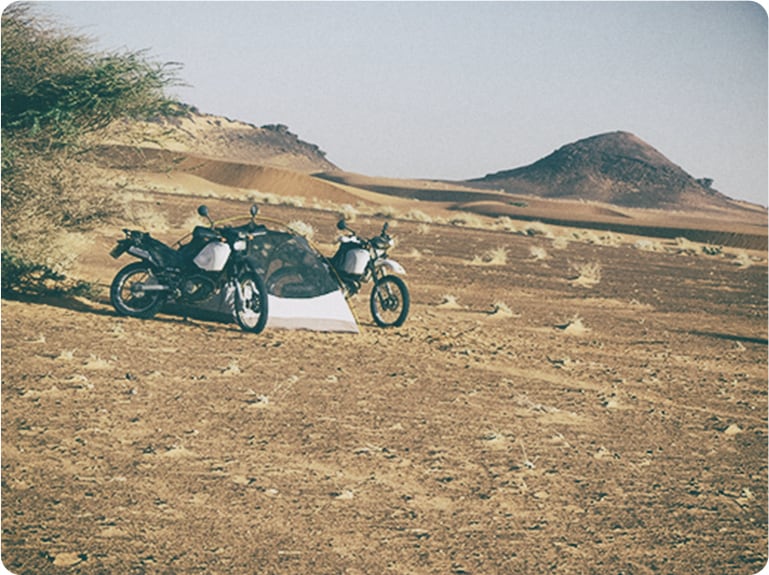
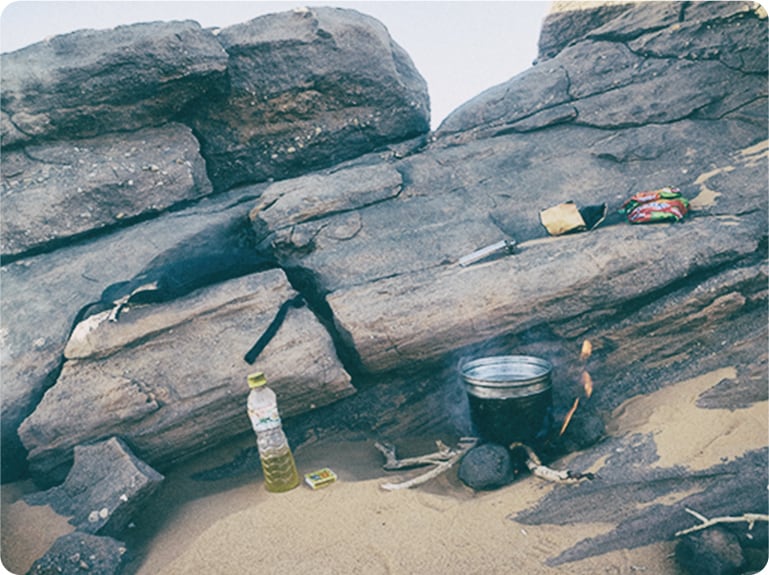

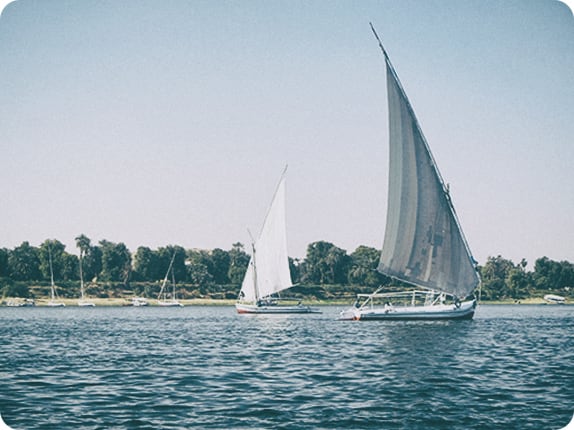
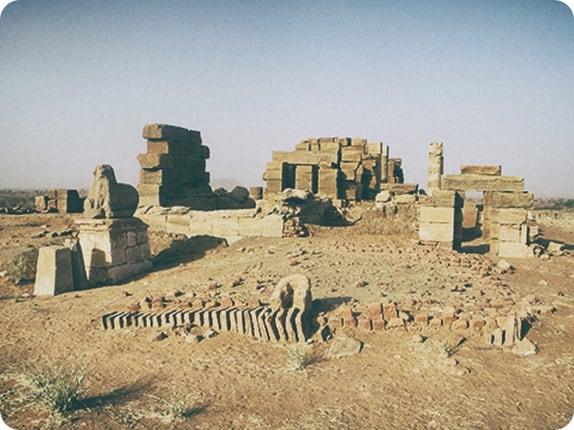
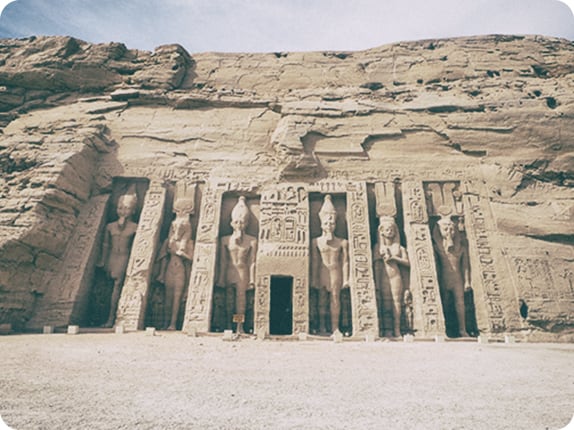
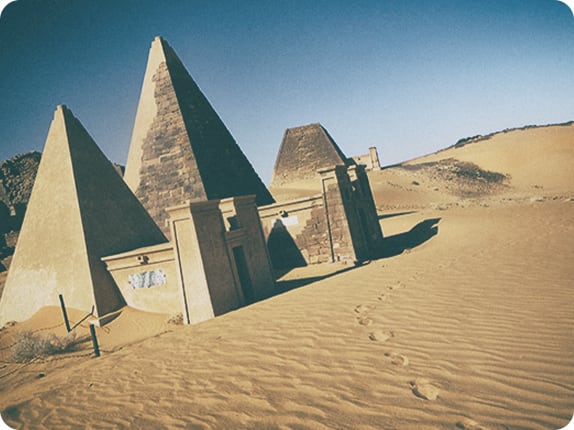
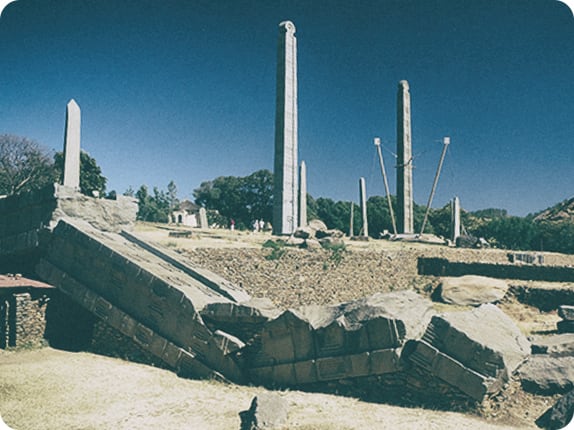
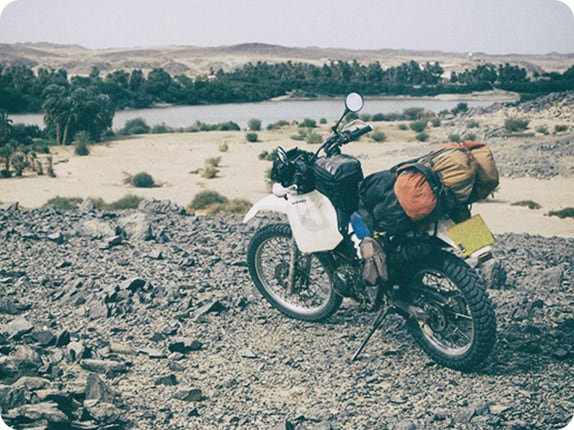




Helen Lloyd
Helen Lloyd is from Norfolk, England. She studied aeronautical engineering at university, and now works on-and-off as an engineer to fund her adventures. In the summer of 2009 she quit her job and left England to cycle through Africa. Here she recalls her return to Africa, but this time on a Yamaha XT225. Helen has had two books published so far, “Desert Snow” and “A Siberian Winter’s Tale” with further ones in the pipeline.